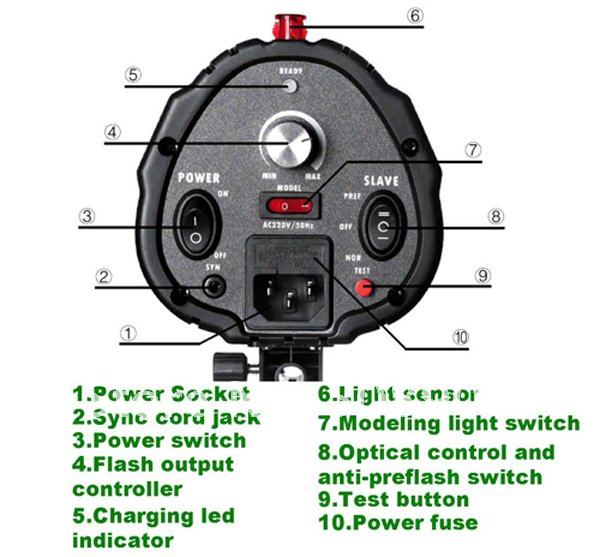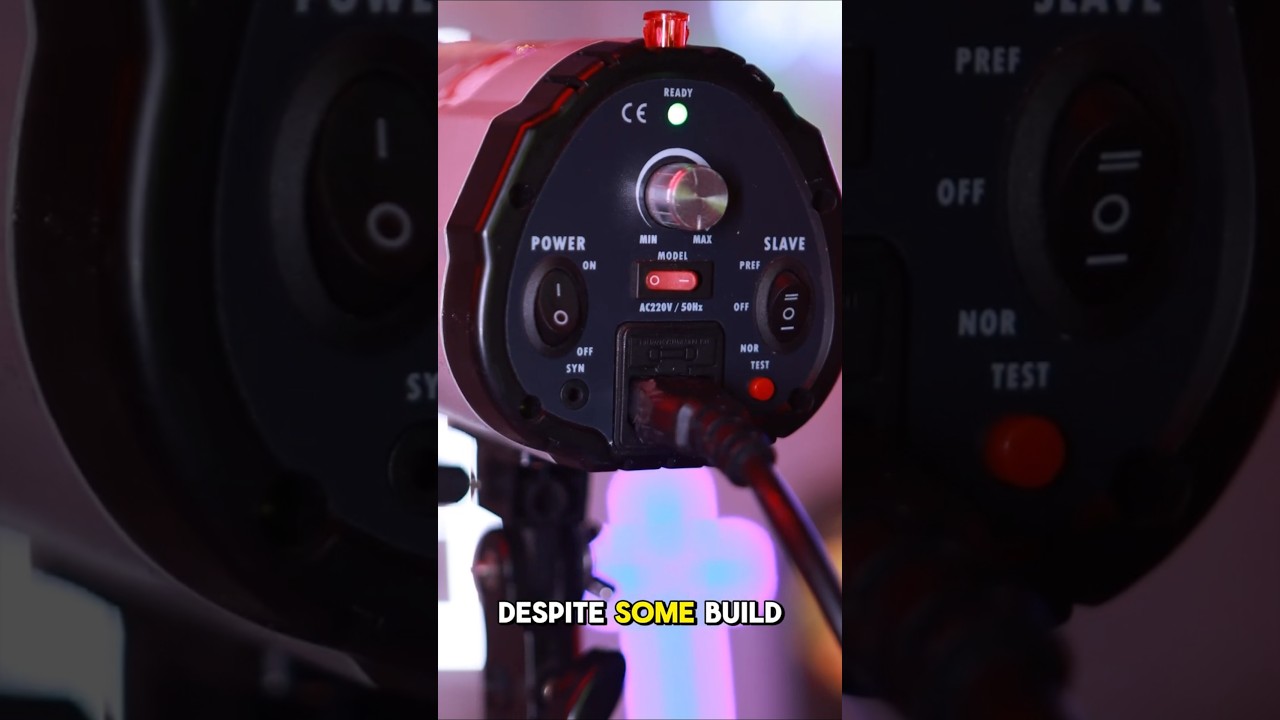An introduction to cheap, unbranded & universal fit Studio Photography strobes
Photography One Minute 101’s – Budget Strobe Light For Beginners
In today’s 101, I’m talking about the very first strobe lights I ever bought! They’re small, they’re basic - but they get the job done. I always say: a light is a light is a light. What you’re really paying for is consistency, convenience, build quality, and, as tech evolves, adaptability - whether that’s through built-in features or the range of modifiers you can use.
Now, these strobes are often marketed as “universal fit,” which sounds great, but let’s manage expectations—they’re pretty limited. “Mounts” refer to how we attach modifiers (like softboxes, umbrellas, or beauty dishes) to our lights, and that’s where these entry-level strobes fall short. Without an additional mount converter, you won’t be able to use the wide range of modifiers made for more common brands. Universal mounts are quite niche and mostly found on beginner lights like these.
We’ll dive deeper into modifiers - and all those terms like softbox, umbrella, and beauty dish - in a future video. But for now, this is a great intro to where it all began.
Although my first strobes were unbranded (cheap and cheerful, as they say), they were basically identical to versions sold by various budget photography companies - just with different logos slapped on. One of the most notable was Godox, who’ve become a go-to name in affordable photography gear. Despite the price point, their equipment is known to be surprisingly good.
Interestingly, Godox’s rise played a big role in the downfall of Bowens, a long-standing giant in the lighting world and the maker of what’s arguably the most popular strobe mount: the Bowens S-fit. As Godox began producing decent gear at a fraction of the price, Bowens simply couldn’t compete. The irony? Things have come full circle. After Bowens went into liquidation, they were bought and revived - reportedly by the same parent company that owns WEX Photographic. And yes, Godox now manufactures all Bowens lights in their own factory but to Bowens' original specifications. So, when you graduate from those entry-level "universal" strobes, the may find yourself in the much more versatile Bowens mount ecosystem, and you could be looking at the likes of Godox, Neewer and other known budget brands. We'll cover a Godox in the next video!
Basic functionality of any strobe light

I've included above the back of the Godox 300DI, with a key to all its functionality. It's is identical to my unbranded universal fit stroibe lights.
A light is a light is a light, right?
Absolutely - it's one of my core philosophies. But for strobes to actually be useful in a studio setting, they need to offer some basic functionality. Otherwise, you're likely to end up frustrated or feeling a bit defeated. Of course, there will always be some limitations rooted in physics - such is the nature of photography - but it’s our job as photographer to work with those limits, use them to our advantage, or at the very least, anticipate them so they don’t become more than just a minor inconvenience.
We’ll go into more detail in a future video / blog post about how strobes sync with your camera and how they communicate with one another, but for now, I want to focus on just one feature: the exposure dial. This controls the light’s power output. Believe it or not, there are strobe lights out there with fixed exposure outputs - meaning you can’t adjust the power at all. The idea is that you manage brightness by simply moving the light closer or farther from your subject. And while that can work, it also changes the quality of the light, not just its intensity. So yes, distance can be a tool for exposure, but having the ability to control the power directly will serve you far better in the long run.

Above is a photo of the plastic light mount - the bit that connects the strobe to the light stand. I included it to make a quick point: these things are terribly made. In fact, if you watch the video, you’ll see I’ve already had to modify mine with a washer and new bolt after the original thread gave out. They’re prone to snapping and can’t reliably hold the weight of a decent modifier without gradually collapsing in on themselves.
You know what they say: buy cheap, buy twice. But here’s a silver lining - at the amateur or hobbyist level, these inconveniences actually give you a crash course in on-the-fly problem-solving. You’ll find yourself MacGyvering solutions, rigging plan Bs, and learning valuable lessons for when things inevitably go wrong on a professional set - because they will - and you’ll be far better prepared than most!
You’ll be glad to know that while we still have a few of these old lights lying around at Splash Point Photo (mainly because I’ve hung onto mine for nostalgia or backup), they’re far from our go-to gear. Hardly anyone uses them. That said, they’re there if you want to expand your setup. I still use one occasionally - either when I’ve got a big multi lighting arrangement, or I just need something smaller and easy to tuck out of sight.
